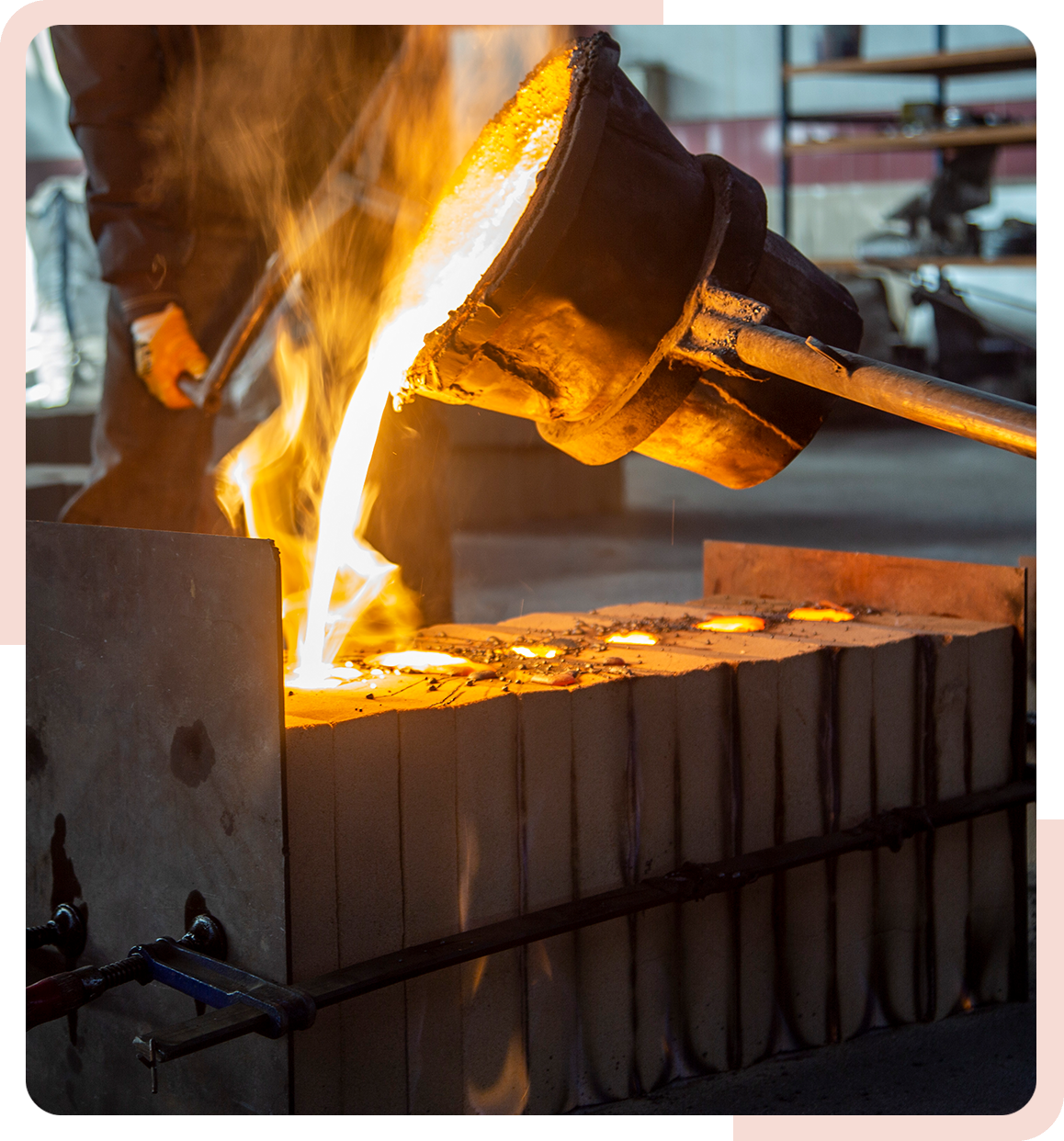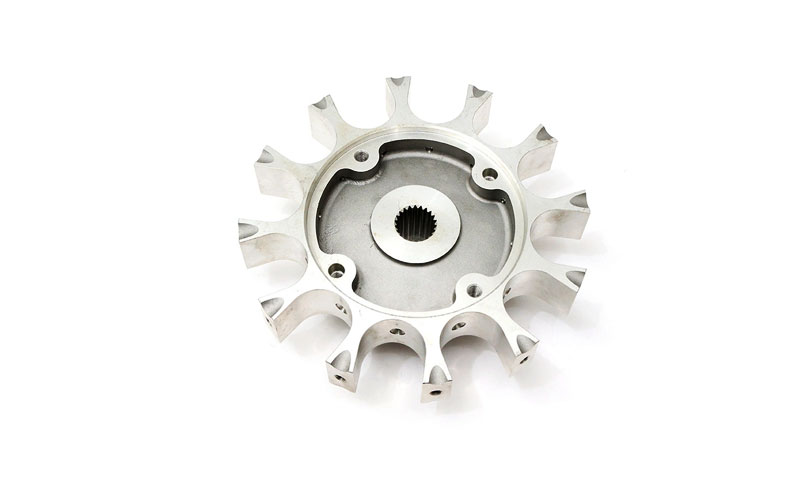Comparing Sand, Die, and Investment Methods in aluminum casting
Aluminum Casting Techniques: a Deep Dive Into Products and Methods for Success
Aluminum casting techniques play a vital function in production. Numerous approaches exist, each matched to different applications and requirements. Sand casting is preferred for bigger elements, while die casting is known for its precision in high-volume manufacturing. Financial investment casting offers in-depth designs with remarkable surfaces. Recognizing these distinctions can greatly affect project results. Precision aluminum casting. Picking the proper method is not always uncomplicated, leading to crucial considerations that have to be discovered even more.
Recognizing Aluminum Casting: A Review
Aluminum casting is a necessary manufacturing process used across various industries to produce complex elements with high precision. This technique includes pouring molten aluminum into a mold and mildew, enabling it to take the shape and solidify of the preferred part. The adaptability of aluminum, combined with its corrosion-resistant and light-weight residential or commercial properties, makes it an optimal choice for applications in vehicle, aerospace, and durable goods.
Various casting methods exist, each matched to particular needs and project ranges. Factors such as mold and mildew products, cooling down rates, and the intricacy of the layout play a considerable duty in figuring out one of the most effective strategy. Furthermore, the residential properties of the aluminum alloy made use of can affect the end product's surface, durability, and toughness surface.
Understanding the fundamentals of aluminum casting makes it possible for makers to optimize manufacturing processes, decrease waste, and assurance high-grade output, which is necessary in today's affordable market.
Sand Casting: Applications and strategies
Amongst the various techniques used in aluminum casting, sand casting sticks out because of its versatility and cost-effectiveness. This technique includes producing a mold and mildew from a mixture of sand and binder, which can be formed to fit intricate layouts. When the mold and mildew is ready, liquified aluminum is poured into it, permitting intricate features and information to be recorded.
Sand casting is particularly valuable for producing large parts and low-volume manufacturing runs, making it optimal for vehicle parts, machinery parts, and artistic sculptures. The method also fits a series of aluminum alloys, boosting its convenience in various applications. Additionally, the usage of sand as a mold and mildew material allows for very easy recovery and reuse, adding to environmentally lasting methods. Accomplishing high dimensional accuracy can offer difficulties, necessitating proficient craftsmanship and mindful control of the casting process. In general, sand casting stays an essential technique in aluminum factories worldwide.
Die Casting: Precision and Effectiveness
Die casting is an extremely reliable technique of creating aluminum parts with exceptional dimensional precision and surface area finish. This process entails requiring liquified aluminum into an exactly machined mold and mildew under high stress, which enables intricate styles and marginal material waste. The rapid air conditioning of the alloy within the mold causes a strengthened part that typically needs little to no extra machining.
Die casting is particularly useful for high-volume production runs, where consistency and speed are extremely important. It supports the production of complex geometries, making it appropriate for numerous applications, consisting of automobile, aerospace, and customer items.
Additionally, the procedure can accommodate numerous aluminum alloys, enhancing the mechanical buildings of the completed items. With its capacity to generate lightweight yet resilient elements, die casting sticks out as a recommended strategy in modern-day manufacturing, supplying both precision and efficiency in aluminum casting.
Investment Casting: Information and Complexity
Financial investment casting, additionally called lost-wax casting, is a specific and functional method for producing visit our website complex aluminum components. This technique is especially valued for its capacity to produce intricate geometries and fine information that are commonly unattainable with other casting methods. The process starts with a wax pattern, which is covered in a ceramic covering. Once the shell sets, the wax is dissolved, leaving a thorough mold and mildew for aluminum putting.
The benefits of financial investment casting include remarkable surface finish and dimensional accuracy, lessening the requirement for extensive machining later. It is especially beneficial for little to medium production runs where precision is important. This approach suits various aluminum alloys, improving its applicability across markets. Precision aluminum casting. Ultimately, investment casting stands apart for its capacity to supply both aesthetic appeal and practical performance in aluminum parts, making it a preferred selection for designers and designers seeking facility remedies

Choosing the Right Method for Your Task
Exactly how can one figure out the most ideal aluminum casting technique for a particular task? The choice process rests on numerous important factors, consisting of the complexity of the layout, the wanted surface area finish, and manufacturing quantity needs. For elaborate layouts, investment casting commonly verifies beneficial as a result of its capability to capture fine information. Alternatively, sand casting may be chosen for larger, much less complicated components, providing cost-efficiency and versatility in manufacturing.
In addition, considerations relating to resistances and mechanical buildings of the final product are essential. For high-performance components, die casting might be the most effective choice, as it gives superior dimensional precision and surface area high quality. In enhancement, comprehending the why not find out more material homes and compatibility with the picked approach is very important for making sure the success of the task. Ultimately, a complete analysis of these factors will lead the decision-making process, leading to the most effective aluminum casting method for the particular job handy.
Frequently Asked Questions
What Is the Ecological Effect of Aluminum Casting Techniques?

Just How Can I Enhance the Surface End Up of Cast Aluminum?
To improve the surface area finish of cast aluminum, one can make use of strategies such as sandblasting, polishing, and using finishings. Correct mold style and temperature level control also substantially enhance the final surface area quality of the cast product.
What Security Preventative Measures Should Be Taken During Aluminum Casting?
During aluminum casting, necessary safety precautions consist of wearing protective gear, making sure correct ventilation, using fireproof products, maintaining a safe range from liquified steel, and sticking to tools security procedures to stop accidents and injuries.
How Do I Repair Usual Casting Issues?
To troubleshoot usual casting issues, one need to evaluate the mold for damage, assess the alloy structure, check putting temperature level, adjust cooling prices, and assurance proper airing vent to minimize air entrapment and enhance casting top quality.
What Are the Expenses Related To Different Aluminum Casting Techniques?
The prices connected with various aluminum casting techniques vary considerably, influenced by aspects such as material costs, labor, devices, and manufacturing scale. Budget plan factors to consider are vital for selecting one of the most appropriate casting approach for certain projects.
Sand casting is preferred for bigger components, while die casting is recognized for its precision in high-volume production. Amongst the different strategies made use of in aluminum casting, sand casting stands out due to its versatility and cost-effectiveness. Die casting is a highly efficient approach of creating aluminum components with phenomenal dimensional accuracy and surface area coating. find Financial investment casting, likewise understood as lost-wax casting, is a specific and flexible approach for producing intricate aluminum components. Exactly how can one determine the most appropriate aluminum casting technique for a particular task?